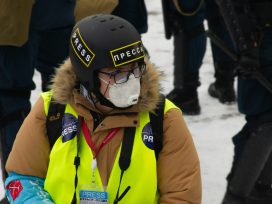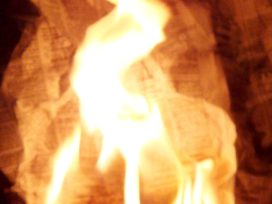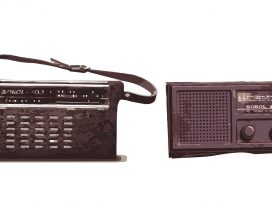The Dutch public service broadcasting (PSB) system has no equal in the world, let alone Europe. All European countries have some form of state-owned public broadcaster with two or three national channels: the BBC in the UK, RAI in Italy or the German ARD/ZDF. The only exception may be Belgium, with two separate state-owned public service broadcasters: the Flemish VRT and its Francophone counterpart RBTF, reflecting the country’s bitter divide. The two institutions cohabit along equally strict dividing lines in a single, labyrinthine building on the outskirts of Brussels. The building even has two separate entrances and two restaurants. But in The Netherlands, public service radio and television are owned by private foundations. The latter are divided along clear political or religious lines and, though publicly funded, remain in private ownership.
According to a growing number of the public as well as many politicians, that private bodies get public money to broadcast their view of the world, plus games shows and talk shows that can just as easily be produced by commercial television stations, is a bad idea. Especially when show hosts earn such huge sums. “That’s my tax money,” is an often-heard complaint. A growing number of politicians argue for a BBC-like, state-owned public broadcaster instead of a system with 24 separate, privately-owned PSB associations.
The origins of this complex system lie in the way Dutch society was organized in the late-nineteenth and early-twentieth centuries. The Netherlands was divided into different zuilen (pillars), each representing an ideological grouping. Each religion and political organization had its own newspapers, hospitals, unions or schools, and mingling between the different pillars was very rare. A Catholic would never read a Protestant paper or become a member of a socialist union, and vice versa. In the 1920s, when a number of radio enthusiasts began to experiment with broadcasting, members of these religious and political organizations saw radio as a new means of “educating their masses”.
Although the government and some religious groups saw the new medium as a threat to public order, broadcast organizations, known as “associations”, were founded. The Protestants were the first: in 1924 they founded the Nederlands Christelijke Radio Vereniging (NCRV, Dutch Christian Radio Association). They were quickly followed by the Catholics (KRO), the Liberal Protestants (VPRO) and the socialists (VARA) in 1925. All four associations turned to the only transmitting station large enough to cover the whole country, the NSF (Nederlandse Seintoestellen Fabriek, The Dutch Transmitter Factory) in Hilversum. This is the main reason why Dutch PSB today is not based in the capital Amsterdam.
Some VARA members soon formed a splinter group, AVRO, with the intention of establishing a single national broadcaster. By the end of the 1920s, however, there were five entrenched broadcasters all broadcasting on one channel, Hilversum1. In 1930, the Dutch government passed the first major broadcasting regulations which allocated each broadcaster 20 per cent of the available airtime.
The radio licence fee was introduced under Nazi occupation and the different broadcasting groups were urged by the government to enter into closer co-operation with each other. While the occupation forces tried to force the associations to work together, in the resistance, communists, socialists, liberals and protestant Christians voluntarily joined forces against the Nazis. Notwithstanding this doorbraak – the breach in the wall between the different zuilen – after the war things returned to “normal”. The pillars settled back into place and became even more hermetic than before. Nevertheless, in 1947, a second channel, Hilversum2, and the Nederlandse Radio Unie (Netherlands Radio Union), were formed to produce joint programmes.
At the end of the 1940s the rules changed: the allocation of airtime was based on the number of members linked to each broadcasting association. It meant that each association would benefit from reinforcing their identity and emphasising their difference from the other associations. The new regulations actually reinforced the separation of the pillars and legitimized the existing, voluntary segregation of Dutch society. Each broadcast association sold its own colour magazine listing the week’s programmes – the associations retain this monopoly on broadcast date to this day – plus interviews with the “stars” of their particular association. Every subscriber to a magazine counted as a member; hence, the weekly circulation of the VARA-gids, NCRV Gids or AVRO Bode became the basis for the allocation of airtime.
The airtime rules cover all broadcasters apart from Nederlandse Radio Unie and its television equivalent Nederlandse Televisie Stichting (Netherlands Television Association), formed in 1951 together with the launch of the first television channel Nederland1. The two associations merged into the Nederlandse Omroep Stichting (Netherlands Broadcast Association) in 1969. The NOS is responsible for all programmes of national importance such as the daily news or major sporting events. A second television channel, Nederland2, was launched in 1964.
The system worked perfectly well until the 1960s, when the Dutch began to emerge from their zuilen. Competition from commercial pirate radio stations such as Radio Caroline and Radio Veronica, broadcasting from ships in the North Sea, forced the Dutch government to set up a third (music) channel, Hilversum3, in 1967. That was the first crack in the fortress of the Dutch broadcasting system. The next was the attempt by the former pirate TV station TROS to enter the system in pursuit of a share of the (tax) money that financed public television. But TROS had no clear political or religious affiliation. There followed a heated debate in parliament and, ultimately, they were allowed in.
In the 1970s, 1980s and 1990s other associations followed: an Evangelical group (EO), educational ones (RVU and TELEAC), a Jewish one (Joodse Omroep), a Muslim one (NMO) and one dedicated to young people (BNN). The former illegal offshore station Radio Veronica was part of the system for 20 years, from 1975 until 1995, when it became a commercial station.
Notwithstanding the launch of two new radio channels, Hilversum4 in 1975 and Radio5 in 1983, and a third television channel (Nederland3) in 1988, the system went into overload: too many broadcasters and only three television channels and five radio channels. A new media law was passed in an attempt to regulate public broadcasting in 1988. It obliged the associations to broadcast 25 per cent news programmes, 25 per cent entertainment and general programmes, 20 per cent cultural programmes and 5 per cent educational. A fund was created to stimulate the production of cultural programmes. When, in October 1988, the first licence-free Dutch television channel, RTL Veronique, officially broadcasting from Luxembourg to avoid the Dutch ban on commercial television, went on air, the protests against the public broadcasting sector started.
Many asked whether their tax should be spent on game shows when a growing number of commercial TV stations aired similar formats. In 1992, when commercial television and radio was legalized and public television and public radio started to lose their audiences (market share dropped from 85 per cent to 50 per cent), politicians began to question the point of the complicated and costly system, in which each broadcaster had its own building, own studios and own board of directors, all paid for with taxpayers’ money.
The protest forced politicians to cut funding and the public broadcasters to start thinking about their role. Collaboration and horizontal programming became the keywords, especially for expensive programmes requiring journalistic expertise. As a result, three television news programmes were launched in the mid-1990s: Netwerk (NCRV, AVRO, KRO), TweeVandaag (Veronica, EO, TROS) and NOVA (NOS, VARA).
These programmes were successful and reached a high professional standard. The same is also true of the daily radio show Radio1 Journaal, produced by NOS, and the in-depth shows made by the various broadcasters. But despite the high standards, the public turned its back on national radio and television. Channel managers tried everything to reverse this trend in vain.
The arrival of more privately owned channels, such as SBS6 and Net5 in the mid-1990s reduced the public broadcasters’ market share even further; today, the average market share of Dutch public television is around 35 per cent. According to the latest figures (2008) from NPO, the three channels combined show a 34.9 per cent average share, 3.6 per cent more than the year before and almost 6 per cent more than the European average. The broadcasters united in the European Broadcasting Union (EBU) boast an average 28.7 per cent market share.
Since the end of the 1990s and the beginning of the new century, criticism of the demonization of “politically incorrect” politicians such as Pim Fortuyn by public television has grown. Dutch PSB was increasingly considered out of date: too leftwing, too expensive. Ever since the 2002 general election, the reform of The Netherland’s unique broadcasting system has become an important political issue. Fortuyn was the first to call publicly for the abolition of the system and the establishment of a BBC-style national broadcaster. Since then, many politicians, sociologists and journalists have said this model might be the best way to resolve both economic problems and growing public discontent.
Amid this changed political climate, the criticism of “leftwing” public TV and radio continued to grow. The rise of the far-right politician Geert Wilders has institutionalized this feeling. According to his supporters, Wilders is constantly attacked by public television because of his views on Muslims and non-western immigrants.
Some rightwing entrepreneurs picked up this general discontent and saw a possibility to enter the Hilversum “fortress”. When, in September 2010, “Green” broadcaster Llink was forced out, having failed to garner enough members, De Telegraaf, The Netherlands’ biggest rightwing paper, launched Wakker Nederland (Wake up Holland), attracted enough members and entered the system. In addition, the rebellious website Geen Stijl, which denounces everything that is leftwing and politically correct, managed to attract enough members to start to broadcast Powned. The broadcasters were also pushed to raise the profile of their programmes, to show more of their political or religious background. This is evident in the subjects the different broadcast companies choose in their news programmes; the EO (Evangelicals) emphasise moral or ethical issues, while the VARA (Socialists) covers more social issues. After years of collaboration, especially in news programmes (NOVA, Netwerk and EenVandaag), broadcasters now need to go it alone. Lots of know-how and audiences were lost: Netwerk, for example, had around 580,000 viewers daily, while the new Uitgesproken! attracts only around 450,000.
Altogether, with all the different Catholic, Protestant, Muslim, Jewish and liberal associations, the Dutch broadcasting system has a total of 24 broadcast associations producing radio and television programmes. Many feel this is too much. Combined with growing irritation about the supposed leftwing bias of public television and the high salaries of some of the hosts, opinion on public television is increasingly negative.
Wilders exploited the criticism of his views on the public broadcasting system for political propaganda. Since the licence fee was abolished in 2000 and became a part of general taxation, many people have complained about having to pay for something they neither watch nor that represents them. Now that Wilders’ party supports the new Dutch minority government, his ideas on “leftwing” public broadcasting have become part of government policy. Presidents of some of the television associations feel the euro 200 million cuts are Wilders’ revenge on the way television and radio programmes have criticized him in the past couple of years. Public television’s recent revelations of Wilders’ party members’ involvement in criminal actions in the past confirms Wilders’ belief, and that of his voters, that the “leftwing” fortress still exists. He has accused its journalists of conducting a witch-hunt.
The tension between “The Hague” (the seat of the Dutch government) and “Hilversum” (the seat of the public broadcasters) is growing, even now that “rightwing” associations such as Powned and Wakker Nederland are in the system. The Hague accuses Hilversum of a leftwing bias, Hilversum accuses The Hague of not caring about having a cultural force in the country. Recent television ads starring well-known faces of public television tell the public that Public Television belongs to all of them, while worried employees in the different associations protest against what they call “Het kwart van Rutte” (Rutte’s quarter); Prime Minister Mark Rutte’s euro 200 million cut is about 25 per cent of the yearly public broadcasting budget. Many ask where the euro 200 million is going to come from, given the major cuts already made to the public television and radio budget over the past 15 years.
Wilders is clear. One public television channel is more than enough. If broadcasting associations want to survive, they need to become private production companies or start their own commercial television channels. Like many of the opposition parties in the Dutch parliament, Rutte’s People’s Party for Freedom and Democracy (VVD) wants to maintain two ad-free public channels. The other party in the Dutch minority government, the Christian Democrats (CDA), wants to maintain the status quo. Yet a majority, however small, wants to merge The Netherlands’ unique public broadcasting system into a single state-owned public broadcaster modelled on the BBC. It looks as if AVRO will get what it wanted way back in 1927.






